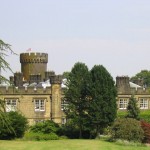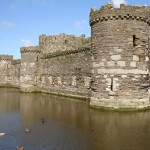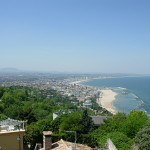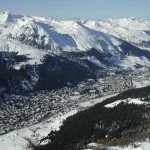Air Traffic Control
As the weather gets warmer, and people step into holiday-mode, volumes of passengers at airports start to swell. It may seem that the skies above us are vast, empty playgrounds for aircraft, but peak holiday season equals rush hour above the clouds. It’s the air traffic controller’s job to make sure things all go smoothly.
What is air traffic control?
Air traffic controllers are ground-based staff, operating from a control tower. They co-ordinate and organise the movements of aircraft, making sure that they fly within a safe distance from each other, thus avoiding any collisions. They also direct flights during take-off and landing, relay information to pilots and direct them around bad weather.
How does air traffic control work?
Air traffic control is a complex system. A controller uses radar screen systems to display all the aircraft flying in their particular sector at a given time – airspace is divided into zones and each zone is divided into sectors. The airspace that they work in is called controlled airspace. Although the systems they use display information in 2-D, the air traffic controllers have to think in 3-D; what may look like two aircraft nearly colliding on the screen, may in fact actually be a thousand feet apart from each other in reality.
Modern aircraft also have collision avoidance systems that serve as a backup to an air traffic controller’s radar system, but pilots still rely on air traffic control during a flight. Although air traffic controllers are responsible for emergency monitoring, the pilot has the final call for the safety of the flight, however, and may deviate from instructions given in an emergency.
Departure
The air traffic controller uses visual observation before a flight departs, to assess whether the runway is clear for a flight to taxi into position. They also use radar to check that the departing aircraft won’t get in the way of landing aircraft. The air traffic controller then gives the aircraft clearance to depart. Once the flight has taken off, the pilot activates a transponder in the cockpit, which sends a radar signal with the flight’s number, altitude, airspeed and destination to radar towers located along the plane’s route. The airplane will appear as a dot on the air traffic controller’s radar screen systems. As the aircraft travels through various airspaces, the plane is passed from one air traffic controller centre to another, until it finally reaches its destination.
Arrivals
The signal of a descending aircraft gets picked up by the air traffic control centre, at the arrival airport. The air traffic controller can see the number of aircraft in the airspace surrounding the airport and the number of planes on the ground. With this information, the controller safely guides an arriving aircraft into the airport and may relay instructions to the pilot depending on the weather conditions.
When we’re off on our travels, it’s quite easy to take for granted how we get from A to B, but a lot of careful co-ordination is going on behind the scenes, to make sure we get to our destinations safely.
This post was written by James Harper on behalf of Lee-Dickens who provide emergency monitoring software and other systems comonly used in air traffic control and industry. Photo: dno1967b
Category: Travel Tips















